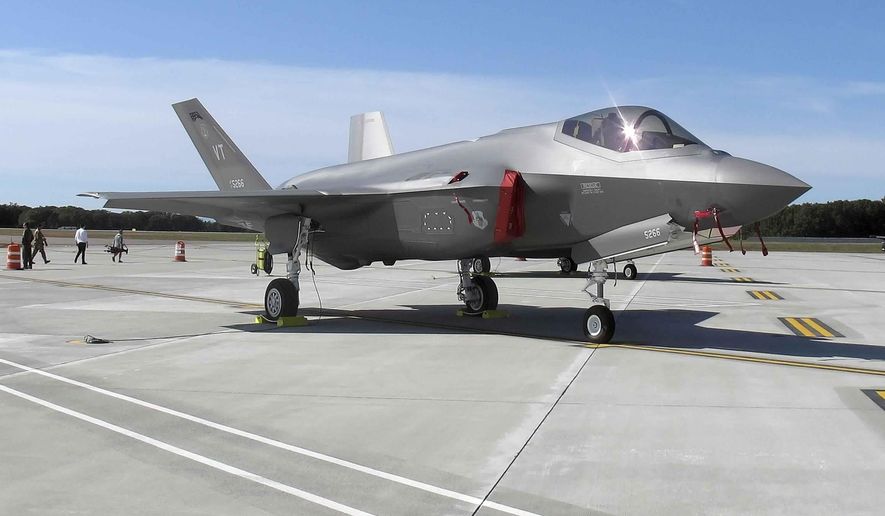OPINION:
American air superiority is facing its greatest challenge in more than three decades.
When I served in Congress on the Armed Services Committee, the United States had to contend with the full strength of the Soviet Air Forces, but the threat environment has changed today. Although the Soviet Union no longer exists, Russian aggression in Ukraine has demonstrated that the current leadership in Moscow still has the ability to use force to cause international disruption. Meanwhile, advances made by the People’s Liberation Army Air Force and the rise of rogue actors across the globe have only increased the risks posed to American air supremacy.
In light of these threats, part of the mandate for the new Republican House majority will be to promote both a strong national defense as well as fiscal restraint.
The Heritage Foundation’s 2023 Index of U.S. Military Strength rates the United States Air Force as “very weak,” mainly on account of an aging aircraft fleet and a slowdown in the purchase of F-35s. Scholars at the American Enterprise Institute similarly contend that the United States has “a fighter gap problem.” Conversely, rapid modernization efforts by the People’s Liberation Army have led one Air Force general to predict that China could overcome U.S. air superiority by 2035. In short, the need to make smart investments to bolster our Air Force and to reinforce our aerial fighter capabilities are as real now as they have ever been.
The current debate over the F-35 engine is illustrative of the smart investments that the Pentagon needs to make to help reverse these trends. As the sole 5th generation fighter aircraft for America as well as many of its key allies and foreign military sales partners, decisions with regard to the F-35 program have broad-ranging implications.
Planned air vehicle growth on the F-35 mean that the thrust, power, and thermal management will exceed the limitations of the current F135 engine by the end of the decade, sparking discussions of potential solutions. Leaders in the Pentagon and in Congress have been proposing an upgrade to the existing F135 engine known as the Enhanced Engine Package (EEP). However, some in the Biden Administration are now proposing to build from scratch an entirely new engine known as the Adaptive Engine Transition Program (AETP). Decisionmakers would be wise to pursue the course of action that provides the greatest return for the lowest cost.
Starting from scratch on a new engine would not allow us to build upon past successes and investments, in effect resetting the process all over again and likely leading to inevitable overspending and production delays. This point is particularly timely given the recent announcement from the Joint Program Office that a critical shortage of power modules for the F-35’s engines has ended ahead of the previously anticipated 2024 timeline. This potential shortfall threatened to render an increasing number of jets non-mission-capable. Still, there is a healthy pipeline in place for the repair facilities, according to a JPO spokesperson.
The new engine proposal would also break the commonality across services – as the Marines and Navy would not be able to house the AETP on their F-35 B and C variants, respectively, for various reasons – requiring the creation of an entirely new infrastructure and supply chain to maintain and source production of the new engine. This would ultimately cause confusion, additional costs, and delays.
From a national security perspective, an upgrade also makes more sense. A full replacement for the F135 propulsion system would take at least a half-decade, precious time when contending with an ever-changing threat environment. The cost of developing and producing the AETP could also top $6 billion, which could lead to a “hard tradeoff,” as Air Force Secretary Frank Kendall put it, requiring the Air Force to forego procuring 70 new F-35s. Considering that the Air Force is already on track to shed over 1,500 aircraft over the next five years, and the fact that three independent analyses conducted by the Pentagon all found that the Air Force must grow its forces by at least 25% to deter and defeat Chinese aggression, these are aircraft we can ill-afford to lose.
Congress should keep this in mind as they begin work on the 2023 National Defense Authorization Act, as the EEP upgrade would accomplish both goals. Moving forward, such innovative programs will be indicative of the kind of creative thinking that military planners must engage to meet current and evolving military threats.
- Former Congressman Richard “Dick” Schulze served on the Armed Services Committee, the Ways and Means Committee and is a past chair of the Republican Study Committee




Please read our comment policy before commenting.